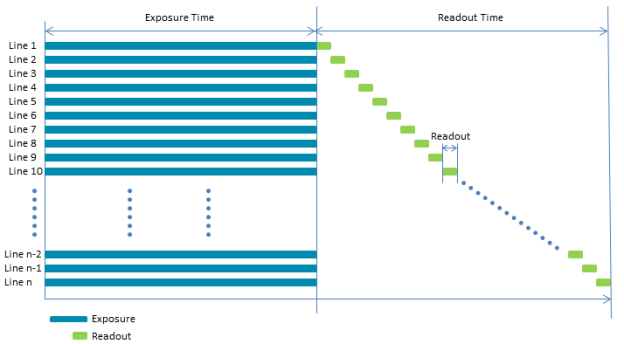Readout Method
Global Shutter
For cameras with a global shutter sensor, for each frame all of the lines start and stop exposure at the same time. The exposure time for each line is the same. Following exposure, data readout begins. The readout time for each line is the same but the start and end times are staggered. Readout time for a line is equal to 1/Horizontal Line Frequency.

Some advantages of global shutter are more uniform brightness and minimal motion blur.
Rolling Shutter with Global Reset
For cameras with a rolling shutter with global reset sensor, for each frame all of the lines start exposure at the same time but the end of exposure is delayed by the offset of the previous line's readout. The exposure time for each line gradually lengthens. Data readout for each line begins immediately following the line's exposure. The readout time for each line is the same, but the start and end times are staggered. Readout time for a line is equal to 1/Horizontal Line Frequency.

An advantage of a rolling shutter with global reset is a reduction in image artifacts typical of rolling shutters such as skew and wobble. However, because exposure lengthens throughout the frame, there may be a gradual increase in brightness from top to bottom of an image. This gradient can be diminished or even eliminated by using a strobe flash.
If the camera supports a rolling shutter with a global reset, the strobe can be set to active from the start of exposure of the first line to the end of exposure on the last line (Any pixel) or from the start of exposure on the last line to the end of exposure on the first line (All pixels).
